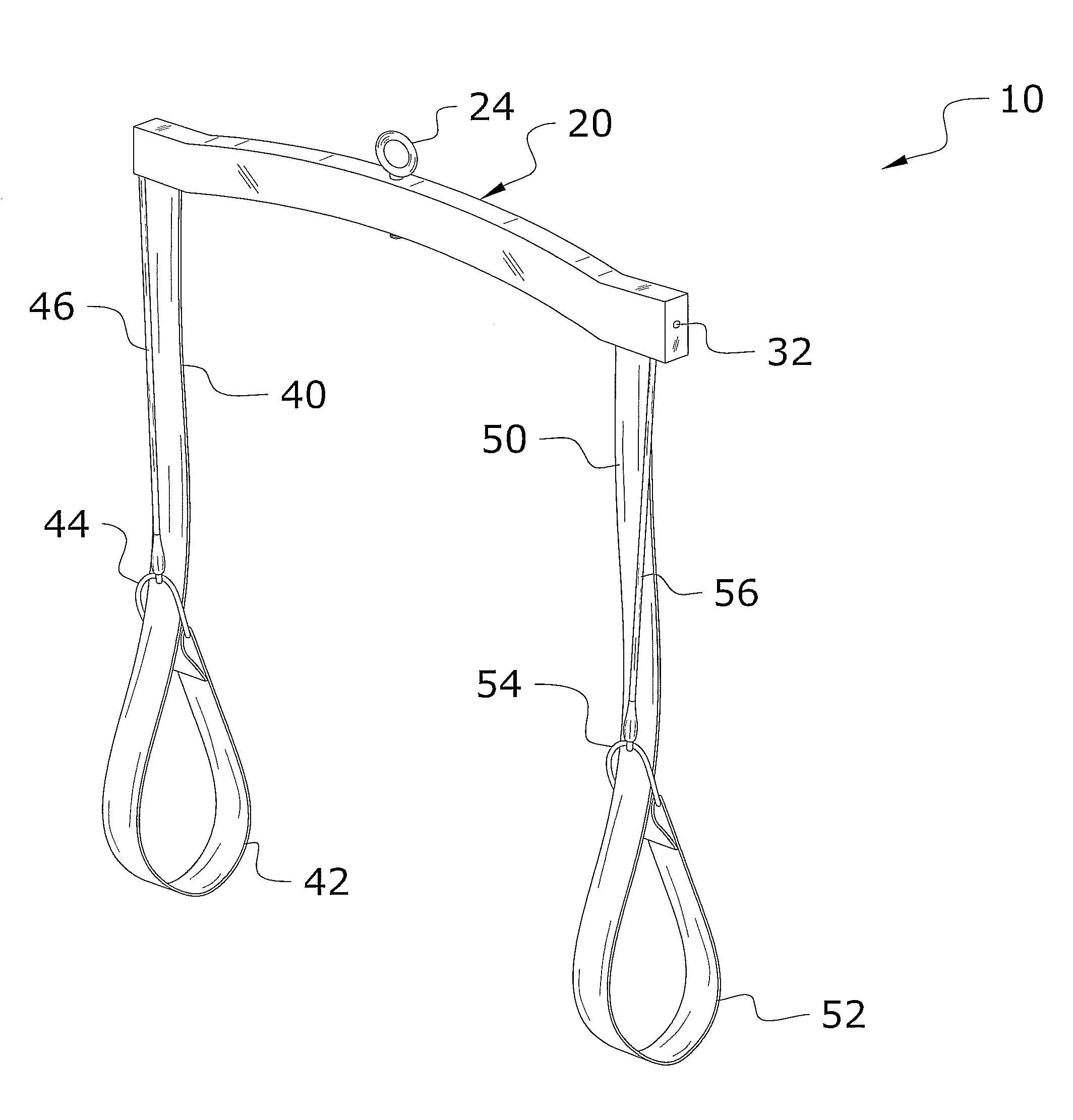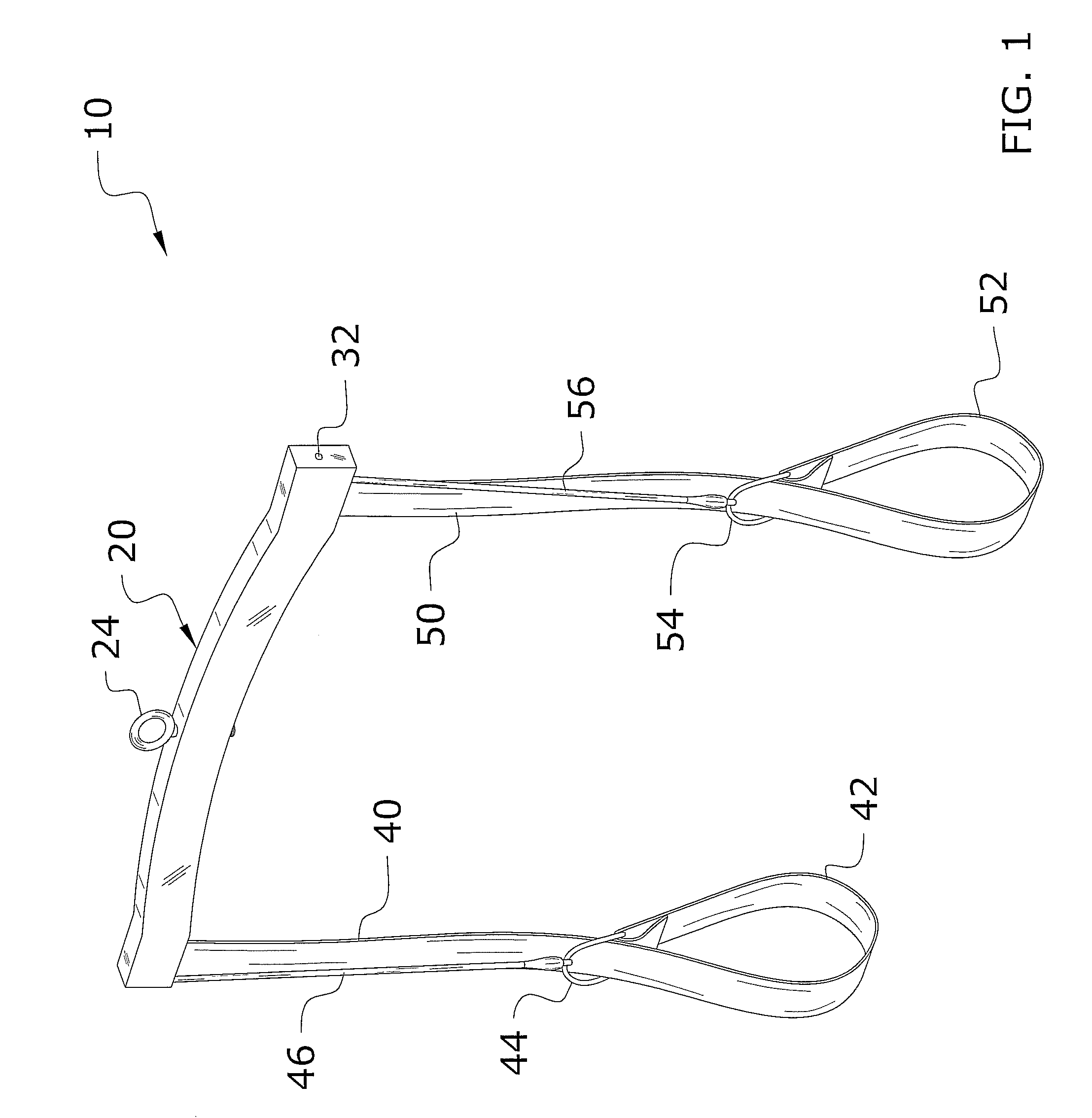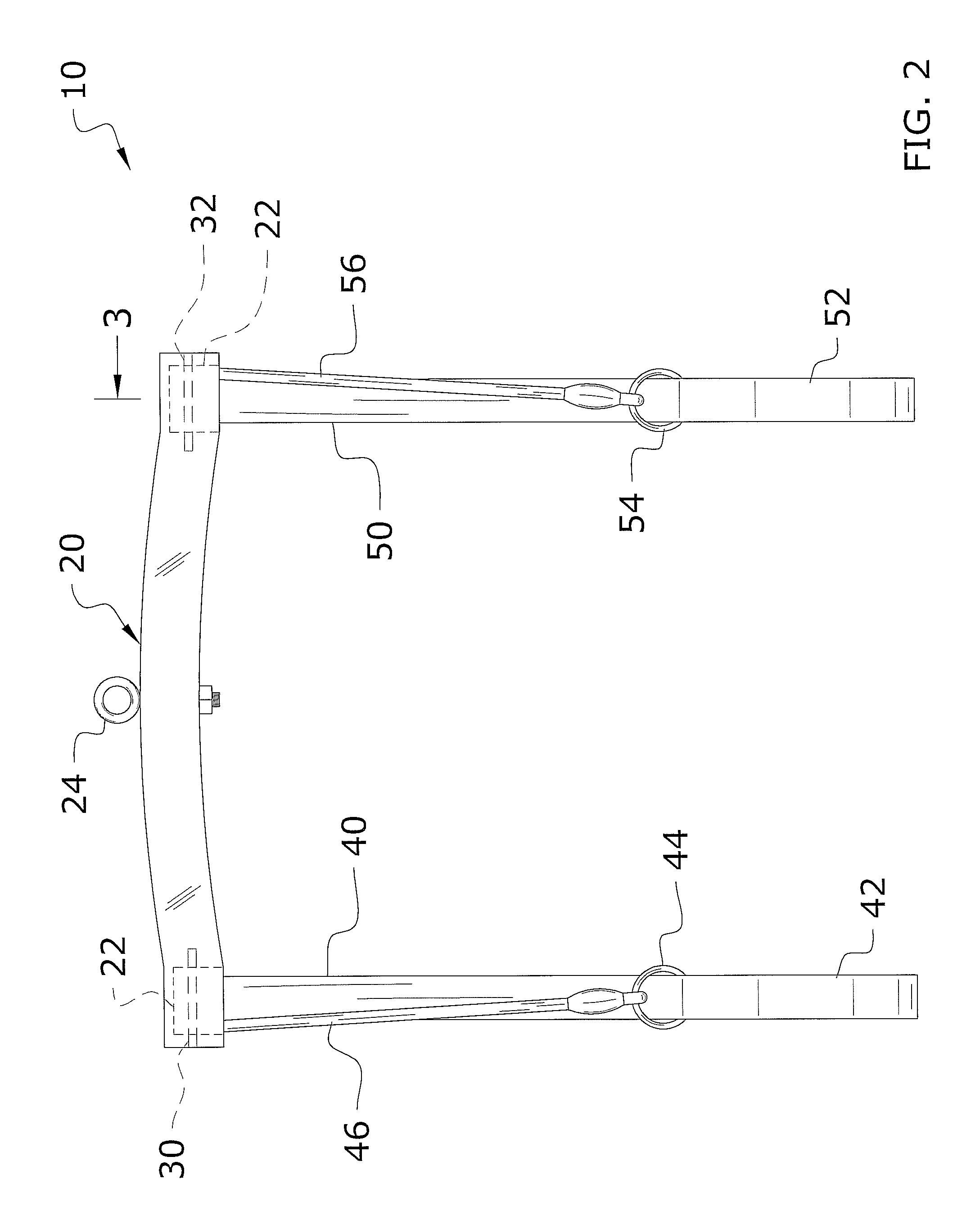Human transporting system
a human transporting and human technology, applied in the field of human transport devices, can solve the problems of difficult to remove from the water, take a significant amount of time to remove the injured human, etc., and achieve the effect of quick and safe removal of the injured human out of the water without slippag
- Summary
- Abstract
- Description
- Claims
- Application Information
AI Technical Summary
Benefits of technology
Problems solved by technology
Method used
Image
Examples
Embodiment Construction
A. Overview
[0027]Turning now descriptively to the drawings, in which similar reference characters denote similar elements throughout the several views, FIGS. 1 through 6 illustrate a human transporting system 10, which comprises a handle 20, a pair of straps attached to the handle 20, a pair of sliding loops attached to the straps forming looped portions for receiving the wrists 12 of an injured human, and a pair of biasing members attached between the handle 20 and the sliding loops. The looped portions receive the wrists 12 of the injured human and the user pulls the injured human from the water by pulling upon the handle 20 which tightens the looped portions upon the wrists 12. Once the injured human is pulled out of the water, the handle 20 is lowered thereby allowing the biasing members to loosen the looped portions about the wrists 12.
B. Handle
[0028]FIGS. 1 and 2 best illustrate an exemplary handle 20 comprised of an elongated structure having a first end and a second end. The...
PUM
 Login to View More
Login to View More Abstract
Description
Claims
Application Information
 Login to View More
Login to View More - R&D
- Intellectual Property
- Life Sciences
- Materials
- Tech Scout
- Unparalleled Data Quality
- Higher Quality Content
- 60% Fewer Hallucinations
Browse by: Latest US Patents, China's latest patents, Technical Efficacy Thesaurus, Application Domain, Technology Topic, Popular Technical Reports.
© 2025 PatSnap. All rights reserved.Legal|Privacy policy|Modern Slavery Act Transparency Statement|Sitemap|About US| Contact US: help@patsnap.com



